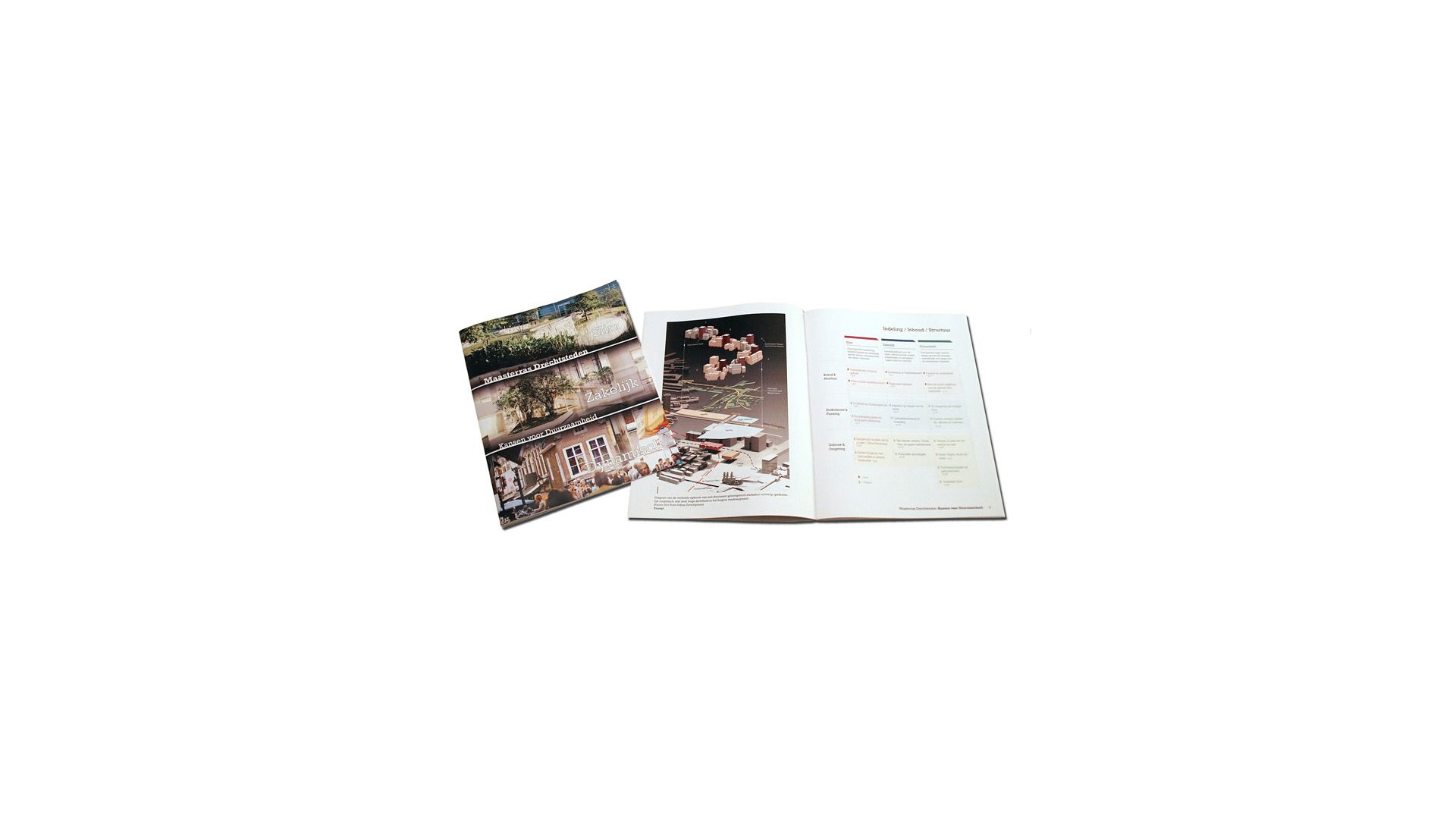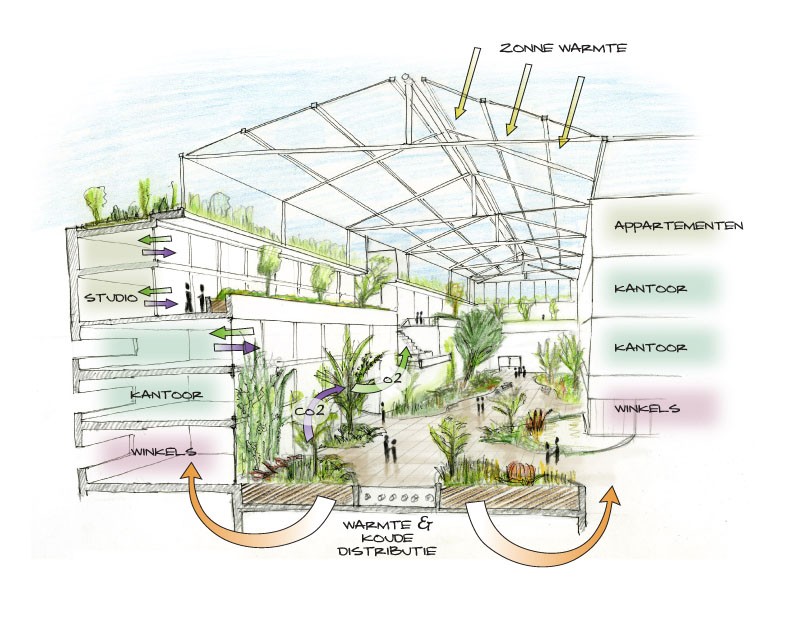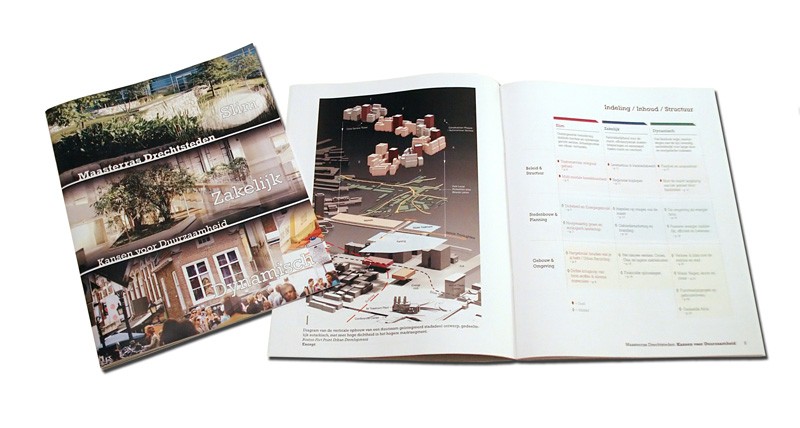

Maasterras Sustainability Scan
Mapping the opportunities of a river city
May 01, 2009

Situated between the highway and train tracks and bisected by the Maas river, the Maasterras is a large urban area soon to be developed by Dordrecht and Zwijndrecht, the Netherlands. Except was commissioned to create a visionary document for this area to help policymakers, developers, and investors alike to see the benefits of sustainable development for this area. The result was a booklet related to the existing structural vision and gave the city council a tool to develop the concept further during its 15-year development tract.

A three-tier scale structure consisting of Policy, Planning, and Architecture, has been combined with the three focus areas of the area; Smart, Business, and Dynamic. Together they form a structure of approach that allows innovations to be applied in an integrated whole, acting on multiple scale levels and areas of application. The separation between goals and means helps the various parties gain insight into how their contribution could help the overall project and how it relates to how the city can become sustainable.

Using solutions that function on various levels at once, every addition to the project becomes more efficient. Smart systems adapt themselves to future changes in demography, society, technology, and markets, and use the strength of ecological systems to work for us.
Buildings and spaces that adapt to rapid changes in market demand, and save energy and resources while doing so are the core focus. Lower health-related costs for business owners and excellent multi-modal transportation options make the area highly attractive to small and medium businesses.
A city that can change over time, and allows the dynamics of people to manifest itself in the direct environment is the objective. Using the river water as a landscape and ecological element saves resources and increases value while shaping an attractive district.

The booklet is easy to read and accessible. A coherent overview of the possibilities of a sustainable region is supported using real-world examples, images, and diagrams alongside the innovative concepts presented. Suggested methods include decentralized energy, water, and waste facilities, urban recycling, adaptive reuse, smart roads & buildings, integrated regional planning, waste-heat use, phytoremediation & stormwater treatment, and many more.
The booklet footprint was offset by using FSC paper, ecologically degradable inks, and minimizing waste.
The booklet joins an existing urban study by Zandbelt & van den Berg.
May 1, 2009